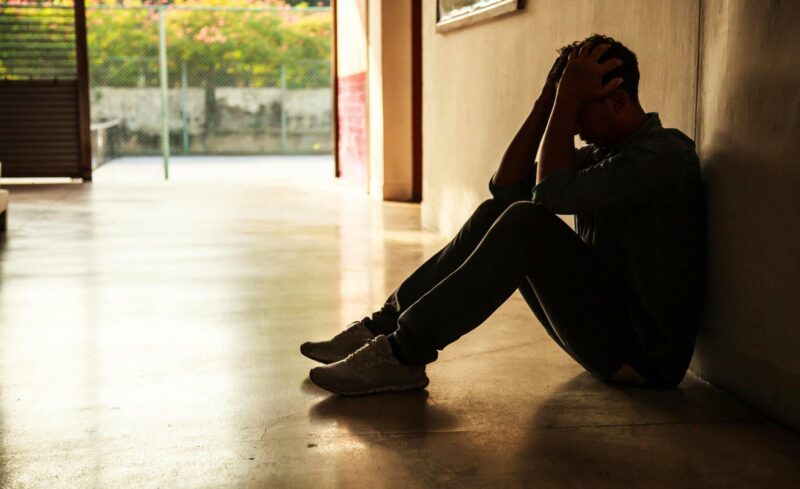
To achieve effective recovery with disordered gambling, it is crucial to understand the psychology addressing the cycle of gambling action. It is also just as important to gain the skills to get out of the cycle and into recovery. Think of it as if you are on a merry-go-round, and you must find a way to get off. How would you do that? Keep reading, and we will explain how you can throw a wrench (coping skill) into the cycle at any point to stop it from continuing.

Thoughts and Fantasies
The cycle or gambling episode begins with having thoughts and fantasies of gambling. This is the first phase of “action,” a term used by professionals meaning currently engaged either consciously or unconsciously with thoughts or behaviors to gamble. This consists of the thoughts and fantasies of past gambling episodes, such as remembering a big win but not the losses (euphoric recall). Brain imaging has shown compulsive gamblers can and will get “high” just by thinking about gambling. This means the brain is actually releasing dopamine (a neurotransmitter produced in the brain that helps people feel pleasure, satisfaction, and motivation at the chemical level), serotonin (a neurotransmitter that helps control mood and plays a role in happiness, optimism, and satisfaction), and adrenaline (a hormone that that causes an increased heart rate, high blood pressure and rapid, shallow respiration to prepare the body for stressful or intense situations) without ingesting any substance like drugs or alcohol. All of these chemical changes that influence thoughts and behaviors occur just by thinking about gambling!
Planning
The second phase of the cycle involves finding ways and opportunities to gamble, along with access to money, and removing any roadblocks that may pop up. There is excitement during this phase as well. It is a challenge for the gambler get all this accomplished without anyone knowing what he or she is doing. That is a thrill in itself.
Gambling
This is the actual gambling behavior. This phase usually ends when something external stops it, such as lack of money, time, getting caught, or having to deal with other obligations.
Crash
This final phase is when reality comes crashing down because of loss of money, broken promises, and/or difficulty meeting responsibilities like bills, rent, food, and debt to family and friends. This phase can bring on great guilt, shame, depression, and anxiety. The results can bring on devastating emotions towards oneself and others, manifesting in anger, physical violence, illegal behaviors, and even suicidal ideation and attempts. There may be feelings of helplessness and hopelessness of not being able to stop the madness of disordered gambling. Finally, this phase may end with a process known as “The Art of Digging Yourself Out of the Hole,” before the cycle begins again. Learn more here.
The Cycle Can Be Broken. Recovery is Possible. Help and Hope are Always Available!
The 24/7, Confidential, and Multilingual 888-ADMIT-IT HelpLine is always available to help you stop the cycle and connect you with powerful tools and resources, no matter where you may be. You are never alone in the battle with problem gambling. Also, consider the following steps to help stop this cycle at any point in the episode:
Thoughts and Fantasies Phase:
- Put up barriers to money. Access to Cash Self-Exclusion resources available through the 888-ADMIT-IT HelpLine can make a big difference.
- Share with a trusted friend or family member that you are having thoughts of gambling.
- Remember how you felt the last time you gambled and lost.
- Write down all the negative consequences gambling has caused you in your life.
Planning Phase:
- Call or text 888-ADMIT-IT and ask about the Peer Connect Program, where you can speak to an individual in recovery for problem gambling that has been in your shoes.
- Call a friend or family member you trust, tell them what is going on, and make plans to spend time with them instead of going to gamble.
- Give any credit/debit/ATM cards and cash over to your spouse or a trusted friend for safe keeping and prevent your ability to act on urges. The FCCG’s A Chance for Change Self-Help Recovery Workbooks, available for free through 888-ADMIT-IT, can help you put together effective strategies like this and others.
- Use your positive self-talk. You CAN break the cycle and resist the urge to gamble.
Gambling Phase:
- Take a break! Give yourself time to consider the actions you are taking and what the results may be.
- Seek Self-Exclusion resources to prevent continued gambling. Call or text 888-ADMIT-IT to connect with these tools, which are available for in-person and online forms of gambling.
Crash Phase:
- Reach out for help! 888-ADMIT-IT HelpLine Specialists are standing by 24/7 to provide non-judgmental and informative conversation about your gambling and the free resources that have been proven to help on the path to recovery. It’s never too late or too early!
- If you are having thoughts of self-harm, contact the 988 the National Suicide Helpline.
- Speak with someone you trust to help you set up a plan for the next time you find yourself starting this cycle.
Just because you gambled or relapsed while in recovery DOES NOT mean you have failed. Recovery from problem gambling is a brave journey filled with challenges. Relapse can and will happen on the path to full recovery. It is part of the process, especially with problem gambling. Use what happened as a learning experience to be better prepared to avoid a recurrence of the disorder in the future. You can do this, and you’re never alone!
Did you know that March is Problem Gambling Awareness Month (PGAM)? This year’s theme is Shine the Light on Problem Gambling: 888-ADMIT-IT Fills in the Blanks! If you or someone you know are seeking answers to questions left by gambling addiction, help and hope are always available. Learn more at problemgamblingawarenessmonth.org and share this important campaign.